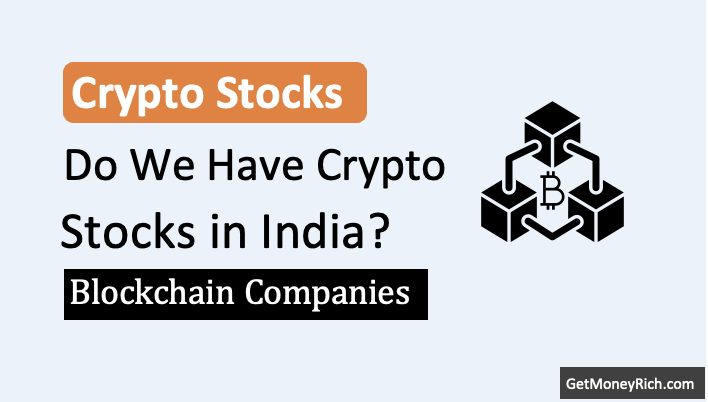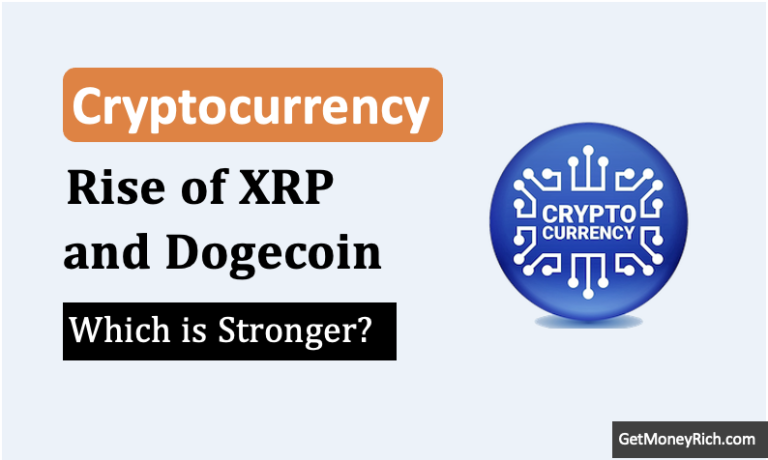Cryptocurrency is a fascinating yet complex topic. To explain it simply, let’s start with a story. Imagine you have a group of friends, and instead of using cash to settle debts, you keep a notebook where you record who owes what to whom. Everyone agrees that the notebook is accurate, and no one can erase or change its entries without everyone’s approval. This notebook is like a blockchain, and the entries in it represent cryptocurrencies.
Now, let’s dive deeper into the topic and understand cryptocurrencies in detail.
1. What is Cryptocurrency?
Cryptocurrency is a type of digital or virtual currency.
Unlike regular money (like Indian Rupees or US Dollars), it doesn’t have a physical form. Instead, it exists only in digital form.
What makes it unique is that it’s decentralized.
This means no single person, company, or government controls it.
Instead, cryptocurrencies run on a technology called blockchain, which is a distributed ledger maintained by a network of computers worldwide.
For example, Bitcoin, the first cryptocurrency, is like digital gold.
Just like gold is mined from the earth, Bitcoins are also mined digitally using powerful computers.
1.1 Example #1: Notebook Analogy
Imagine you and your friends have a notebook where you keep track of who owes what to whom.
Every time someone makes a transaction, like borrowing money or giving money, you write it down in the notebook. The notebook is kept with one person, but everyone can see the entries and verify them.
Now, imagine this notebook isn’t kept by just one person, but it’s shared across several people, all of whom have an identical copy. This is like a distributed ledger, where every participant in the network has a copy of the “notebook.” Whenever someone makes a transaction, it’s recorded in this notebook, and all participants update their copies.
For example, if Ravi gives Priya 1 Bitcoin, the transaction is recorded in the notebook. Then, every participant sees the update. This ensures that no one can fake transactions, because everyone has the same record.
Is it clear? No? Let’s take another relatable example.
1.2 Example #1: Google Sheet Analogy
Imagine the notebook is a Google Sheet file stored in the cloud (server).
Anyone who has the link can view or update it.
In this analogy, the sheet represents the “ledger” where transactions are recorded.
However, in the case of blockchain, the key difference is that the sheet is not controlled by any single person or server. Instead, it’s distributed across many participants (like people on a network), and everyone has an identical, updated version of it.
Moreover, in a Google Sheet, a central authority (like the owner of the file) can edit or change things, but in a blockchain, once an entry (a “block”) is added, it cannot be changed or deleted.
This makes blockchain more secure than a regular shared Google Sheet.
Every time someone makes an update (a transaction), the network of users must agree that the transaction is valid before it gets recorded, making it harder to manipulate or tamper with the data.
Google Sheet analogy is good for understanding the concept of shared visibility. But blockchain is even more transparent, security, and invariable.
2. How Does Cryptocurrency Work?
Let’s imagine cryptocurrency as a Google Sheet that’s shared between a group of people around the world.
This sheet is used to track transactions.
Everyone who has access to it can see and add new entries. However, unlike a normal Google Sheet where the owner has control, this shared sheet is decentralized.
What does it mean? It means, this sheet is not controlled by any one person or organization.
Instead, multiple copies of this sheet exist across a network of computers, all of which are continuously updated and synced.
Now, every time someone wants to make a transaction, like Ravi sending 1 Bitcoin to Priya, it’s like Ravi entering a new row in the shared Google Sheet, saying, “I’m giving 1 Bitcoin to Priya.”
But before this entry is added, the network of computers (called nodes) needs to verify the transaction.
In a Google Sheet, you can edit entries, but here, the computers ensure that Ravi truly owns the Bitcoin he is sending and hasn’t spent it already.
This prevents something called “double-spending,” which is like someone trying to write the same number in two different rows at the same time.
Once the transaction is verified, it’s grouped with other transactions that are happening at the same time, just like multiple rows of data being added to the sheet.
These transactions are then placed together in a “block,” which is like a page in the notebook.
Each block has a unique code called a hash, kind of like a digital fingerprint, that identifies it.
After this block is created, it’s added to the existing list of blocks, forming a chain of blocks, hence the term “blockchain.”
But here’s where it gets interesting.
2.1 Crypto Mining
In our analogy, adding a new row to the Google Sheet isn’t as simple as just typing it in. There’s a process of verification, and this is where miners come in.
Think of miners as a group of people using their powerful computers to solve really hard math puzzles.
The puzzles solving are done to verify that the transactions are valid. To validate these, large computers and servers are needed. It is a huge capital expenditure. So there is a reward for these miners. How?
Once the puzzle is solved, the miner adds the new block to the blockchain. In return for their efforts, miners earn new cryptocurrency, like freshly minted Bitcoin.
The beauty of blockchain is that once a transaction is added to the sheet, it can’t be changed or deleted. So, if Ravi sends 1 Bitcoin to Priya, that entry will always remain in the shared Google Sheet, serving as proof that the transaction happened.
2.2 Why Cryptocurrency is so secure?
In our analogy, we have used an example of Google Sheet (notebook) as a blockchain and entries in this sheet as a cryptocurrency.
What makes this special Google sheet (a blockchain) more secure than a normal google sheet?
Because this Google Sheet isn’t stored on just one computer, but on thousands of computers worldwide.
If one computer goes offline, the others continue running the system, so there’s no single point of failure.
This makes the whole system more secure and reliable compared to traditional systems, like banks, which can be hacked or go down.
3. Why Are Cryptocurrencies Popular?
3.1 Decentralized
Imagine you and your friends are using a shared Google Sheet to track all the transactions.
In traditional banking, when you make a payment, like transferring money to a friend, you’d have to go through a bank. This means a third-party (the bank) is involved to verify and process the transaction.
However, with cryptocurrencies, you don’t need a bank or any middleman. It’s like your Google Sheet is updated automatically without needing approval from anyone else. You just make the entry, and everyone else on the network can immediately see and verify it.
This process is called decentralization.
There’s no central authority that controls the transactions. This is one of the main reasons cryptocurrencies are popular.
3.2 Transparency
In our shared Google Sheet, every transaction is visible to everyone with access to the sheet.
You can see who sent money to whom, how much, and when. This transparency helps build trust among users, because everyone has the same version of the data.
Similarly, with cryptocurrencies, every transaction is publicly recorded on the blockchain, and anyone can view the transaction history.
This openness means there’s less chance for fraud or hidden activities, making the system more trustworthy.
3.3 Security
When you record a transaction (say an online payment) in a normal banking system, there is nothing stopping either the bank or the government form changing it. Thought, RBI has specified strict rules, but there are chances or a fraud.
But when you enter a new transaction in our special Google Sheet or notepad (blockchain), once a transaction is added to the blockchain, it’s encrypted and sealed with a unique digital fingerprint.
This makes it nearly impossible for anyone to alter past transactions.
It’s like locking each entry in the Google Sheet with a strong password that only you and the network can access.
This security makes cryptocurrencies safer to use than traditional methods, where fraud and hacking can happen.
3.4 Accessibility
Let’s say you want to send money to someone in another country. With traditional banking systems, it can take couple of days and involve high fees.
But with cryptocurrencies, the transaction can happen almost instantly and at a fraction of the cost.
Since all you need is an internet connection to access the Google Sheet (or the blockchain), anyone around the world can use cryptocurrencies without needing a bank or complicated processes.
4. The Concept of Cryptocurrency Exchange
It is assumed that, Bitcoin (a cryptocurrency) was invented by a person (or group) called Satoshi Nakamoto.
Then, crypto miners play a key role in creating new Bitcoins through the process of mining. Miners validate transactions and, in return, they are rewarded with new Bitcoin.
However, crypto exchanges do not create cryptocurrency. Instead, they act as platforms where cryptocurrencies like Bitcoin are bought, sold, and traded.
In the cryptocurrency ecosystem, miners create new cryptocurrency (like Bitcoin) through mining, which is added to the blockchain. On the other hand, crypto exchanges provide a marketplace where users can buy or sell these cryptocurrencies. It is done by matching buyers with sellers based on the market price, which is influenced by supply and demand.
This is where volatility comes into a cryptocurrency and a digital currency gets converted into an investment vehicle (like a commodity).
The value of Bitcoin on these exchanges can change rapidly. Blockchain itself doesn’t play a role in determining that value, it only recording transactions.
So, the crypto exchange is where Bitcoin’s price is tracked and influenced by the market forces.
Conclusion
Cryptocurrency (like Bitcoin) is a revolutionary form of digital currency that operates without the need for a central authority.
It’s leveraging the power of blockchain technology for secure, transparent, and decentralized transactions.
Miners create new cryptocurrencies through mining, while crypto exchanges facilitate buying and selling. It is done by matching buyers with sellers, based on the market-driven prices.
The value of cryptocurrencies, such as Bitcoin, is determined by market forces on exchanges, and it can fluctuate significantly due to factors like demand, speculation, and news.
Understanding this ecosystem is crucial for grasping the volatile nature of cryptocurrencies and how they function within the broader financial world.
If you found this article useful, please share it with fellow investors or leave your thoughts in the comments below!
Have a happy investing.






